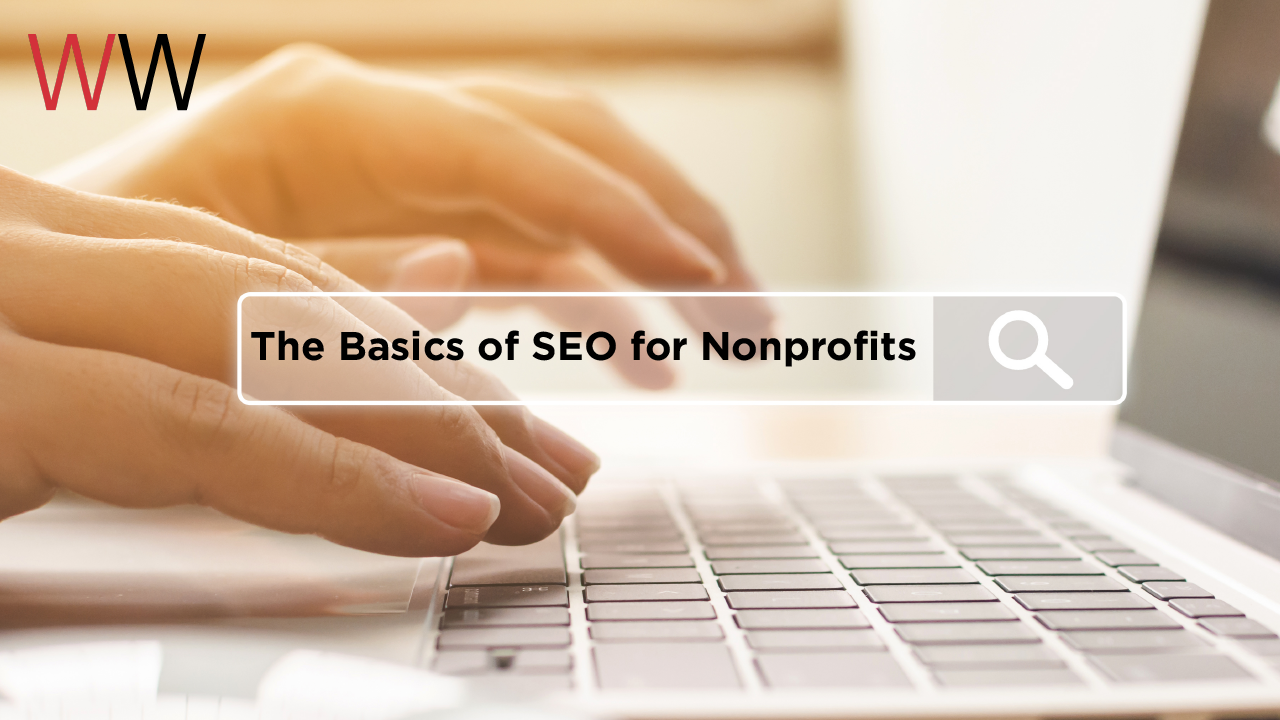Every organization wants to improve their website’s SEO (search engine optimization). We work hard to create engaging content, and improving the SEO for your nonprofit website is the best way to get more views, more comments, and more engagement. However, it can be hard to know what’s worthwhile to do, and what’s not going to make a difference in your nonprofit’s SEO.
So what are the secret ingredients to making your SEO soar? In part one of these two blog posts, we will describe the first basic ingredients: content.
Content Drives SEO
As you’ve probably heard before, content is king. It is pretty much the only reason why anyone visits a website, and it’s the reason you’re reading this blog post right now. People are led to the content you have on your site (pages, events, blog posts, etc.) based on their searches, which means that the better your content fits their search, the better it will perform. So making sure you have quality content is the very best thing you can do to optimize your nonprofit’s SEO.
That being said, there are a few tricks to making your content as amenable to Google’s crawlers (the bots that routinely go through your website to index content). Here are a few:
- Make sure each page has at least 300 words of text. That’s the bare minimum Google will accept to make sure it is a real page with adequate content.
- Make sure your relevant info is in text form. If your nonprofit heavily uses infographics or other images with text in them, make sure the information is reflected in text form. Without the text available to the crawlers, the content could be missed and it could hurt your ranking.
- Address the purpose of the page right at the top of the content. It can be tempting to write a long introduction to your website, but keeping the content at the top will help Google know what relevance your page has.
- While quality content is important, it is also vital that you routinely post new content to your website to stay on top of SEO. Google will reward good content, but it will pay special attention to frequently-updated sites. However, be sure not to duplicate content however, as Google can bring down an entire site if duplicate content exists. Believe us, we have seen it happen!
Keywords Make the Magic Happen
If SEO had a special ingredient, it would be a sprinkling of keywords. These little guys are the reason why SEO (and SEM) exist. Keywords are how you can match up your great content to what people are searching for, shortening the time it takes them to get the answer to whatever they were looking for. So while content is still king, keywords are queen.
As an example, Wikipedia is probably one of the best examples of optimized SEO. As all of us can attest, there is an inordinate amount of content on that website. However, what really makes it shine is the keywords. The searchability, the linking to other related pages, and links within every paragraph make Wikipedia an SEO manager’s goldmine.
The first step is to figure out what your keywords are. This can be a tricky balance, because you want to find keywords popular enough to get you decent traffic, but not so popular that you are competing with too many other people. The good news here is that nonprofits don’t have as many competitors as, say, sneakers do. The bad news is that we don’t get as much traffic either.
To get started, here is an excellent step-by-step SEO tutorial that can help you determine which keywords are a good fit for your website. Once you have those, it’s about developing a list of primary and secondary keywords that you will pepper throughout your site and help you create a consistent content plan moving forward.
Here are a few tricks to get you started:
- When you write a blog post or other page, make sure you include your keywords in your H1 heading tag you have in your html. For more information on this, watch this handy tutorial.
- While keywords are incredibly important, make sure you don’t overuse them to sound spammy. Notice how I include “SEO for nonprofits” in different variations throughout this blog post, which a specific tactic I use to make it sound less spammy, but still hit those keywords often for the crawlers.
- Tag your images. Every image should be relevantly-named (no IMG 4234.jpg!) and tagged with the appropriate keywords.
Every organization wants to improve their website’s SEO (search engine optimization). We work hard to create engaging content, and improving the SEO for your nonprofit website is the best way to get more views, more comments, and more engagement. However, it can be hard to know what’s worthwhile to do, and what’s not going to make a difference in your nonprofit’s SEO.
Google is still far and away the biggest referral source for any website on the internet. Over 50% of all website referrals are provided by Google. That means that understanding how Google functions and what nonprofits need to do to get the highest possible ranking should be number one on your digital strategy list.
Make Google Like You
Google’s mission is to connect searchers to the content they’re looking for as soon as possible. With their searchers in mind, they make decisions about who is reputable and who is not. Therefore, to get them to refer to your nonprofit’s website as much as possible, it’s important to adhere to their rules and make changes that they want to see. Google’s Webmaster Guidelines are a good resource to help you understand how Google finds, indexes and ranks your website.
Some of these we’ve already mentioned with having high-quality content and using correct keywords to direct visitors to your pages. Other things can be more technical, such as page speed or mobile optimization.
For years, page load speed has been a factor in how Google ranks your website. And that trend is only going to increase. In fact, starting in July of 2018, mobile page speed is going to become a factor in how your website ranks to mobile visitors. At first, only the slowest of pages will be affects. But you can be certain that over time, that bar will be raised higher and higher, rewarding those who invest in mobile responsiveness and better hosting.
Here are a few tips to appease the Google overlords:
- It’s really all about mobile. I previously mentioned mobile page speed, which is important. But likely even more important is mobile responsiveness. To test out how your website ranks, try Google’s Mobile-Friendly Test.
- Write great content. I keep coming back to this point because it’s simply the most important thing: create great content that addresses your reader’s interests, and Google will reward you!
- Write a great metadata description for your website that’s compelling and less than 300 characters. This will help your website stand out when people are scrolling through search results.
It’s All About Connection
So what are the secret ingredients to making your SEO soar? The second basic ingredient is connection. They don’t call it “the interwebs” for nothing. The internet is like a giant map of information that is all interconnected. We know these connections as links.
The basic principle at the foundation of Google’s algorithm is the more that people refer to a specific source, the better (and more important) it probably is. If there are two pieces of information, one referred to a million times, and one referred to fifteen times, Google’s bots are assuming the former is better, and will therefore give that one a higher rank.
So even if your content is great and you’re using all the right keywords, it’s important to also make sure other people are connecting to your site through links. It will add credibility to your page, and improve your SEO.
Here are some tips:
- Getting other people to link to your site is about building relationships and proving value. Ask your organization’s partners if they would be willing to link to your site if you link back to them. It helps everyone!
- When you link text on your website to other pages, link the keyword and not just “click here.” That will give an extra bonus “link juice” to help improve rankings.
- Content (I know, you’re sick of this by now) is important, but the promotion of content is also critical. When you post a new blog or page, ask a few organization partners to share it or link to it somewhere on their site.
- Join other conversations. See a trending topic on Twitter that aligns with your mission? Jump into the conversation (in an authentic and non-spammy way) and link to your page. The more places your link appears, the better your SEO will become.
And there you have it. These two basic ingredients will get you 90% of the way to improving your SEO and Google rank. Want to learn more? Contact Williams Whittle to see what else we can do to help your website stand out from the crowd!
Allison is a nonprofit communications consultant and friend of Williams Whittle who specializes in creating affordable communications strategies for small nonprofits. She has five years of nonprofit and association experience including developing communications strategies, conducting an organizational rebrand, and building a custom social network.



